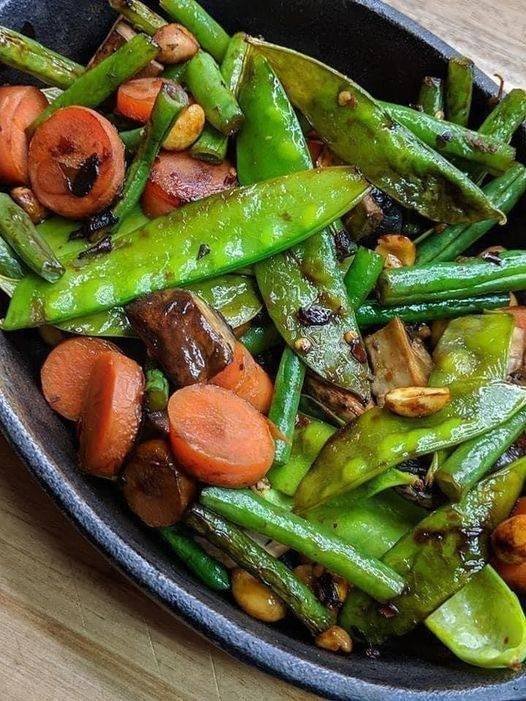Savor the Vibrant Flavors of Stir-Fry Vegetables: A Culinary Adventure
Introduction: Exploring the Art of Stir-Frying
Welcome to the world of stir-fry vegetables, where an array of colorful veggies dances in harmony with savory sauces and aromatic spices. Stir-frying is not just a cooking technique; it’s a culinary adventure that allows you to unleash your creativity while creating wholesome and flavorful dishes. Join us as we embark on a journey to master the art of stir-frying and discover the endless possibilities it offers for creating delicious and nutritious meals.
Ingredients: A Palette of Freshness
The canvas for our stir-fry masterpiece begins with an assortment of vibrant vegetables, including bell peppers, broccoli, carrots, snap peas, mushrooms, onions, and any other vegetables of your choice. These fresh and colorful ingredients provide the foundation for a dish that is both visually appealing and packed with nutrients. For added protein, consider including sliced chicken breast, shrimp, or tofu, adding depth and satiety to the dish.

Preparation: Crafting the Perfect Stir-Fry
- Vegetable Preparation: Start by washing, peeling, and chopping your vegetables into bite-sized pieces, ensuring uniformity for even cooking. This step sets the stage for a visually stunning and well-balanced dish.
- Protein Preparation: If adding protein, such as chicken breast, shrimp, or tofu, cook it separately until fully cooked and set aside. This ensures that each component of the stir-fry is cooked to perfection and allows for easy customization based on dietary preferences.
- Sautéing Aromatics: Heat a large skillet or wok over medium-high heat and add a small amount of oil or cooking spray. Sauté minced garlic and ginger until fragrant, infusing the dish with layers of aromatic flavor that will tantalize your taste buds.
- Stir-Frying Vegetables: Add the chopped vegetables to the skillet and stir-fry them until they’re tender yet still crisp, retaining their vibrant colors and natural crunch. This quick cooking method preserves the nutrients and freshness of the vegetables, resulting in a dish that is both nutritious and delicious.
- Seasoning and Finishing: Drizzle low-sodium soy sauce or tamari over the vegetables, tossing them to coat evenly. Exercise caution not to add too much sauce, as it can increase the sodium content of the dish. Taste and adjust the seasoning as needed, adding additional spices or seasonings like black pepper or chili flakes for an extra kick of flavor.
- Bringing it All Together: If you cooked protein separately, add it back to the skillet and toss everything together until heated through, allowing the flavors to meld together in perfect harmony.
Presentation: A Feast for the Senses
Serve your stir-fry vegetables hot as a standalone dish, allowing the vibrant colors and flavors to take center stage. For a complete meal, pair them with cooked brown rice or quinoa, adding texture and substance to the dish. Garnish with fresh herbs or sesame seeds for a final touch of elegance and visual appeal.
Conclusion: Elevating Everyday Cooking
In conclusion, stir-fry vegetables are more than just a meal; they’re a celebration of freshness, flavor, and creativity. By mastering the art of stir-frying, you can transform everyday ingredients into culinary masterpieces that delight the senses and nourish the body. So gather your ingredients, fire up your skillet, and embark on a culinary adventure that will elevate your cooking to new heights.

